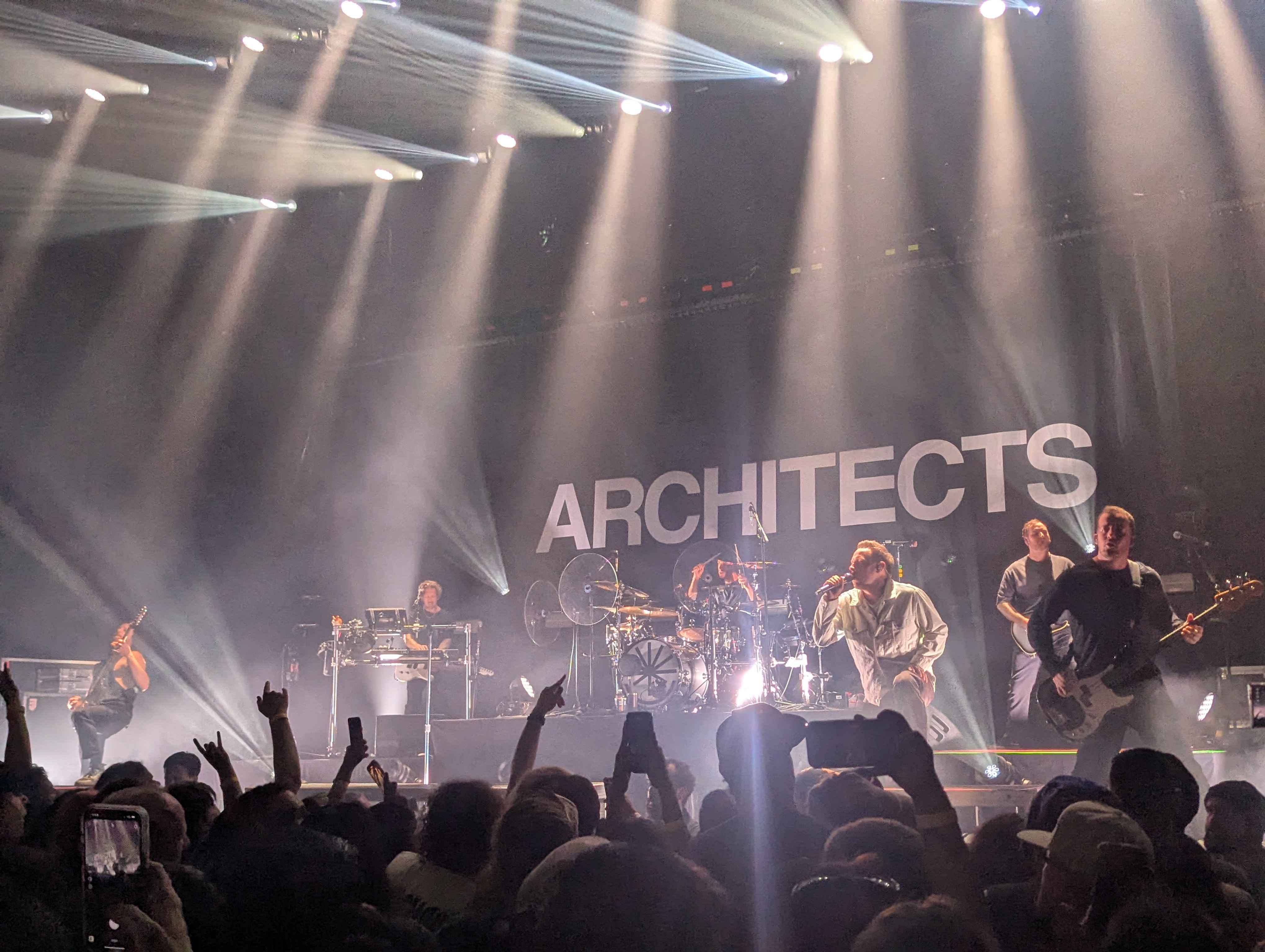
I saw the metalcore band Architects this past weekend and I’ve been thinking (as you may suspect) a lot about game design lately.
See, I recently read through a very long Discord thread discussing this blog post about how story games often expect players to move between the roles of portraying characters and adding detail to the setting or scenario. I don’t really relate to the friction with context switching that the post’s author describes, but it did get me thinking about when, how, and with what level of awareness we context switch during play.
Mosh pits are, surely, at least game-adjacent. Maybe they’re even a role playing game, if your definition is expansive enough. There are rules, enforced by a play culture, and often instructions (this may be true of a lot of dance culture, but I’ll stick with what I know).
I’m not well-studied on the wide world of metal culture, but I’ve been around metalcore scenes for almost a couple decades, enough to have a solid grasp on this particular space. For the uninitiated, here are some things that you can do within the social fabric of a metalcore show:
- Push people around in the pit; that’s the moshing!
- Clear some space and hardcore dance (depending on the genre and crowd)
- Stand on the edge of the pit, pushing people back in when they get propelled out — you’ll also make openings for people trying to leave and form a barrier between the pit and the folks who aren’t trying to participate in it
- And of course, stand away from the pit and do your thing: headbang, jump up and down, or be real cool and only nod very slightly to the music
At a metal show, live music is the catalyst by which participants slip into a “play” state, where they focus primarily on their embodied experience of the music.
But the “play” mode is only half the puzzle. In the pit, people fall over, drop hats, lose shoes, or catch stray elbows. Pit protocols form around genre, venue, location, and the subcultures that all of these things foster, but there are some common facets of a good mosh pit, where the crowd broadly cares about mutual enjoyment and safety. When someone falls, you pick them up. When someone loses something, you help them find it (or help found items get back to their owners). When someone gets hurt, you make space for them and get them out if needed. People in the pit have to be doing this in tandem with "play"; the people on the outer edge of the pit are doing sort of a hybrid.
Mosh pits can also shift in response to the performers' direction; anywhere between simple riling like “I wanna see you guys get wild!” and direct commands like “Open this place up and get a circle pit going!” Sometimes they’ll set a tone (“I want it to look like a fuckin warzone in here”, “if somebody falls, help them up!”), emphasizing the culture they want to foster and incrementally replicating it to inexperienced attendees.
But while the performers can instruct, they aren’t the ones facilitating the experience. Crucially, at any moment during “play”, the majority of folks are also ready to switch gears to a “facilitator” role focused on social awareness and upholding rules. We’re better at doing this than we think! We can move pretty fluidly in and out of having an embodied experience based on the social demands of the moment, not dissimilarly to how we might steward each others’ experience at a game table.
So there it is: rules, instruction, play culture, and distinct player and facilitator roles. I suspect LARP designers and enthusiasts are (rightly) grumbling that similar phenomena are well-explored in the LARP scene. Still, I had fun thinking about it in the context of a cultural niche that's near and dear to me.